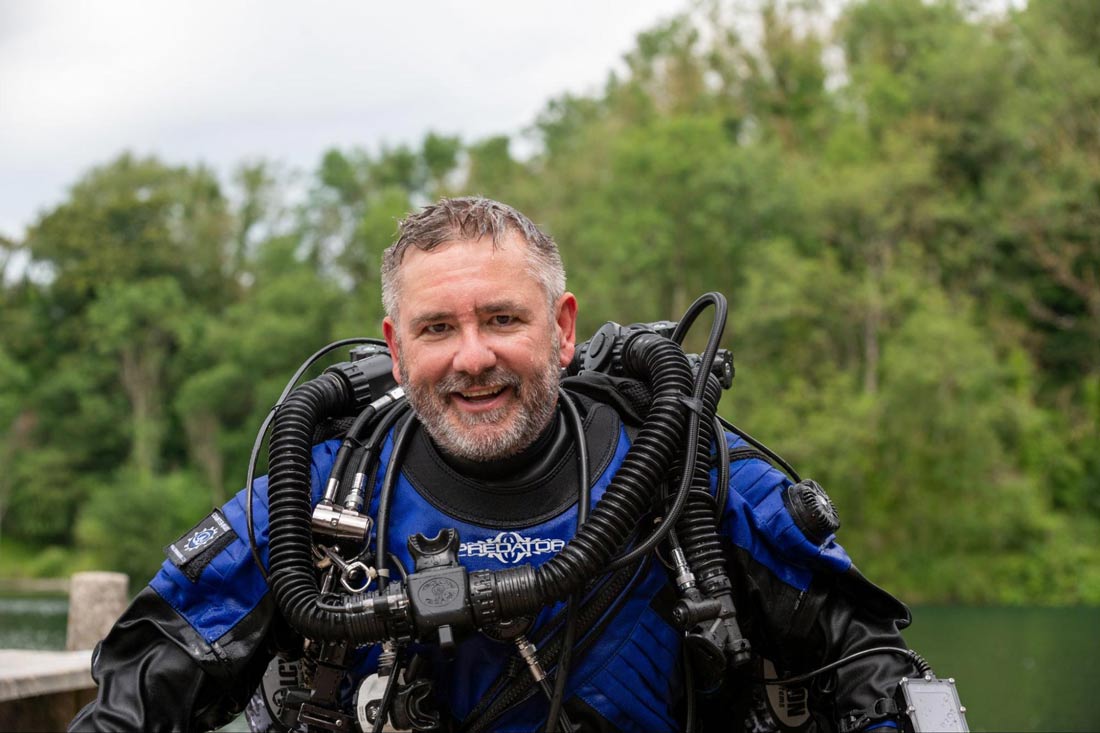Safety is paramount in underwater diving, as a multitude of things can go wrong with humans being in an environment they did not evolve to be in. With such a huge amount of risk, responsibility does not fall solely on the individual but, more importantly, on the system they operate in.
The Human Diver, an educational organization founded by Gareth Lock, a former Royal Air Force navigator and experienced diver, seeks to amplify safety by applying human factors and just culture in diving. However, the knowledge, skills and attitudes needed in diving are applicable to other fields and industries, enabling teams to perform at a higher level. Since 2016, when Lock began this work, he says the team has trained more than 500 individuals face-to-face, along with more than 2,000 people through online training programs. The Human Diver has a crew of instructors, located all over the world, who bring their knowledge about diving into their respective fields, including food, medicine, archaeology and software.
According to Lock, safety comes as a by-product of high performance, regardless of who is performing, whether it’s a pharmaceutical team, surgical team or financial team. Because of human nature, the hardest part is getting people and organizations to recognize this, as they typically measure safety as the absence of accidents rather than the presence of the capacity to manage safety. This leads people to think that when nothing has gone wrong, they’re safe. However, they have limited awareness of the latent issues and risks that accumulate within their system because they haven’t created an environment where people can provide learning-focused feedback.
The Human Diver’s programs place a focus on non-technical skills (situational awareness decision-making, communication, teamwork, leadership and followership). They are supported by the presence of a just culture. Just culture was defined by Professor James Reason in Managing the Risks of Organizational Accidents as “an atmosphere of trust in which people are encouraged, even rewarded, for providing essential safety-related information—but in which they are also clear about where the line must be drawn between acceptable and unacceptable behavior.” This concept recognizes that human error is normal, and that punishing someone for making a mistake is detrimental because it can lead to people hiding errors instead of calling attention to and learning from them. Having a clear line between what’s acceptable and unacceptable is needed to ensure people are still accountable for their actions and to prevent abuse of the system.
Lock also incorporates human factors into the programs, which, put simply, is designing, deploying and refining systems that make it easier to do the right thing and harder to do the wrong thing. Human factors came about after several aviation and nuclear power disasters in the 1970s and 1980s revealed that operators weren’t ignorant or malicious despite the catastrophe. Instead, they were making sense of the situation they were in and the resources (physical and mental) they were given to achieve the goals they were being rewarded for. According to Lock, these work environments had often been designed without addressing the limitations of human performance, which included the limits of working memory, limited attention span, miscommunication, authority gradient and confusion with displays and controls.
Lock, who says he has logged more than 2,000 flight hours in his 25-year RAF career, believes it’s important to give teams a structure to review their activities similar to how standard debriefing works in a military aviation setting, where the mission isn’t over until the debriefing happens. However, in most civilian projects, the debriefing is about what didn’t go well, and if everything appears to go well, the value of the debriefing disappears.
“Most of the time, leaders ask their team ‘What went wrong?’ Well, if nothing went wrong, then the conversation ends,” Lock says. “If we can turn it around and ask, ‘What can we improve and how will we do that?’ then there’s always an opportunity to improve, and we can find out what things we can work on—focusing on the ‘how’ is harder than the ‘what.’ Debriefing and reflection need to be built into the organization’s DNA to ensure continuous improvement and learning from intelligent failure.”
Lock prefers working closely with small teams of six to 12 people in a process known as guided discovery, where each individual finds out the answer themselves. This is more time-consuming than simple slide reading for mere compliance purposes, but it is more effective in creating change. The Human Diver’s program helps create a self-awareness of the team members’ performance under stress. In various exercises, team members are assigned roles and are each given incomplete information. The team is only able to solve the problem by working together and openly exchanging information. Following each exercise, they are provided with a structured debriefing session, allowing them to point out the areas where they need to improve and transfer this knowledge to their professional environment.
According to Lock, these exercises are about creating a shared mental model within the team, which improves communication and psychological safety. “It’s a reflection of a high-stress environment where you’ve got incomplete information, you don’t know what the future’s going to bring, and you’ve got conflicting goals that need to be addressed,” he adds. “There needs to be some prioritization, and the teams discover that they need a leader who can clearly define the priorities and what roles are needed to achieve them. And then, at the debriefing, they realize the things that they should’ve done beforehand and what needs to be put in place next time. Because it is experiential and emotional, it’s also sticky and that generates lasting change within an organization.”






